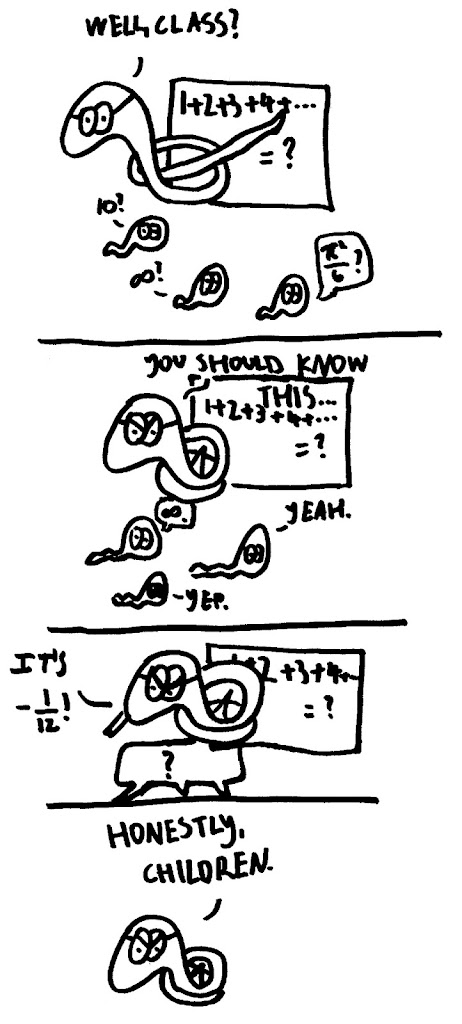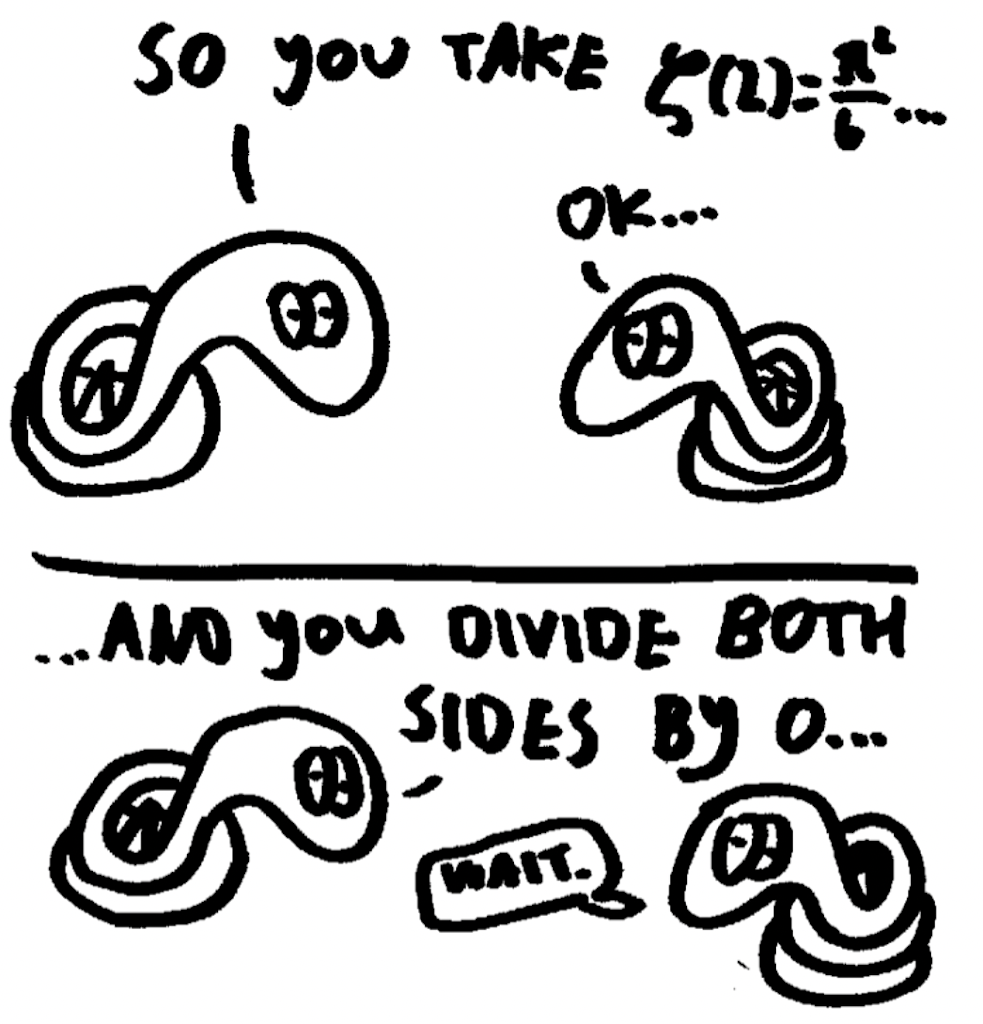If you’ve ever heard of the phrase “Riemann hypothesis” and wondered what it meant, then worry no more! This series of posts shall explain all.
And if you haven’t heard of the phrase “Riemann hypothesis”, then worry no more! Now you have.
To understand the Riemann hypothesis, first you must understand the Riemann zeta function. The function (notated as \zeta(s)) is simple enough for some numbers:
\zeta(s)=\displaystyle\sum_{n=1}^{\infty} \frac{1}{n^s}=\frac{1}{1^s}+\frac{1}{2^s}+\frac{1}{3^s}+\cdotsSo, for example, \zeta(2)\approx1.6449 which somewhat surprisingly is equal to \frac{\pi^2}{6}1This was an unsolved problem for nearly a century until it was solved rather cleverly by Leonhard Euler—it’s a neat little proof, and I might do a post on it some time.,\zeta(3)\approx1.2021, and \zeta(i)\approx0.0022-0.4182i.
But you start to run into problems when you try to extend it to numbers less than or equal to 1: \zeta(1)=\frac{1}{1}+\frac{1}{2}+\frac{1}{3}+\cdots, which diverges2It goes to infinity., and the same with \zeta(0), which is just 1+1+1+\cdots, and \zeta(-1)=1+2+3+\cdots.
To deal with this, mathematicians use a technique called analytic continuation, which is a bit beyond the scope of this blog post, but it ends up with a nice function that works on every number. However, when you plug these results back into the original function it produces some amusing results:
\zeta(-1)=-\frac{1}{12}so
1+2+3+4+\cdots=-\frac{1}{12}?!
Anyway, you’re probably wondering how all this ties in to the Riemann hypothesis. First, we need to ask the question When does the Riemann zeta function equal zero? Or, equivalently, What are the zeroes of the Riemann zeta function?
It turns out that there are several “trivial zeros” on the negative even numbers. That is, \zeta(-2n)=0 for any natural number n. The other zeros all seem to have a real part of \frac{1}{2}, so that their formula is \frac{1}{2}+it for any real t.
Deep breath. All right, ready for it? The Riemann hypothesis states, The real part of every nontrivial zero of the Riemann zeta function is \frac{1}{2}. Now, when you look at this yet unproved statement, it seems somewhat useless, but rest assured that it has far-reaching implications on number theory, especially the distribution of primes, if true. Also, the prover gets a million dollars from the Clay Mathematics Institute. (Did I forget to mention that?) So, if you have a few debts to pay off, what are you waiting for? Get to work!

This is the first part in a series about unsolved problems. The next part, a history of the Riemann hypothesis, will be coming soon!